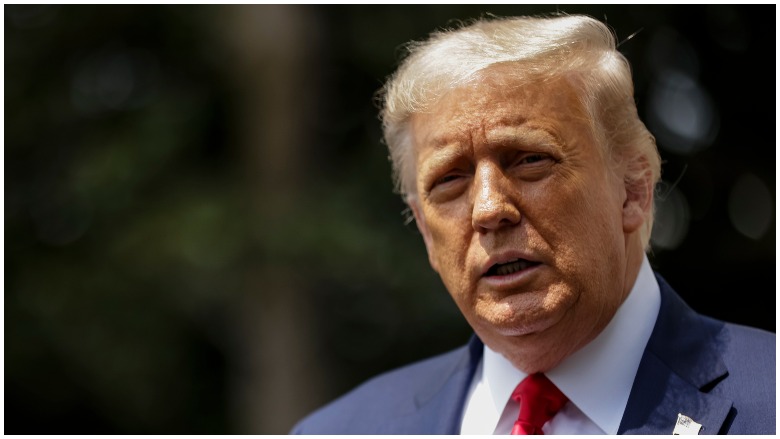
Getty President Donald Trump departs the White House for a trip to Ohio where he will visit a Whirlpool factory on August 6, 2020 in Washington, DC.
On August 8, President Donald Trump signed four executive orders in an attempt to provide economic relief to Americans struggling in the wake of the coronavirus pandemic. Noticeably missing from his actions was funding for a second round of stimulus checks.
Why?
According to CNBC, funding for federal programs must be authorized by Congress.
Kris Coz, a senior tax policy analyst for the Center on Budget and Policy Priorities, told the outlet, “The constitution mandates that only Congress has the power of the purse — the president cannot unilaterally tax and spend.”
Thus, a bill that includes a second round of payments must pass in the House and Senate, and then be signed by President Donald Trump, if Americans are to see a second stimulus check.
Could There Still Be a Second Round of Stimulus Checks?
Just because Trump did not include stimulus checks in his list of executive orders does not necessarily mean you won’t receive another stimulus check.
Both sides of the aisle and the White House have all vocalized their support for another stimulus check on multiple occasions. In fact, both sides seem to agree on a $1,200 stimulus check per qualifying individual.
The Senate’s HEALS Act, which is currently on the table, proposes $1,200 per qualified individual.
However, Democrats and Republicans can’t reach an agreement on the parameters of a stimulus package on the whole — both sides remain divided on details like the total cost of a package, additional state aid and unemployment benefits.
In a joint statement on Saturday, House Speaker Nancy Pelosi and Senate Democratic Leader Chuck Schumer insinuated that discussions could continue this week in the hopes of a consensus being reached.
“Democrats repeat our call to Republicans to return to the table, meet us halfway and work together to deliver immediate relief to the American people,” the statement read. “Lives are being lost, and time is of the essence.”
What Could Happen Next?
According to Forbes, the next step is waiting to see how negotiations pan out between the House and the Senate. They add that it “feels like the two sides are creeping closer together and it’s encouraging to know that they are continuing to work towards reaching an agreement.”
According to CNET, if negotiations continue this week, it’s possible that a vote could take place on Tuesday or Wednesday. If the House does vote on Tuesday, then the Senate can vote on Wednesday, and Trump could have the bill signed into law by August 13.
On Monday morning, Treasury Secretary Steven Mnuchin said, “I think there is a compromise if the Democrats are willing to be reasonable. There is still a lot of things that we need to do and that we’ve agreed on… We’re prepared to put more money on the table.”
He added that if a “fair deal” can be reached, the Trump administration will “do it this week.”
READ NEXT: Stimulus Check 2: Did Congress Agree on a Package?